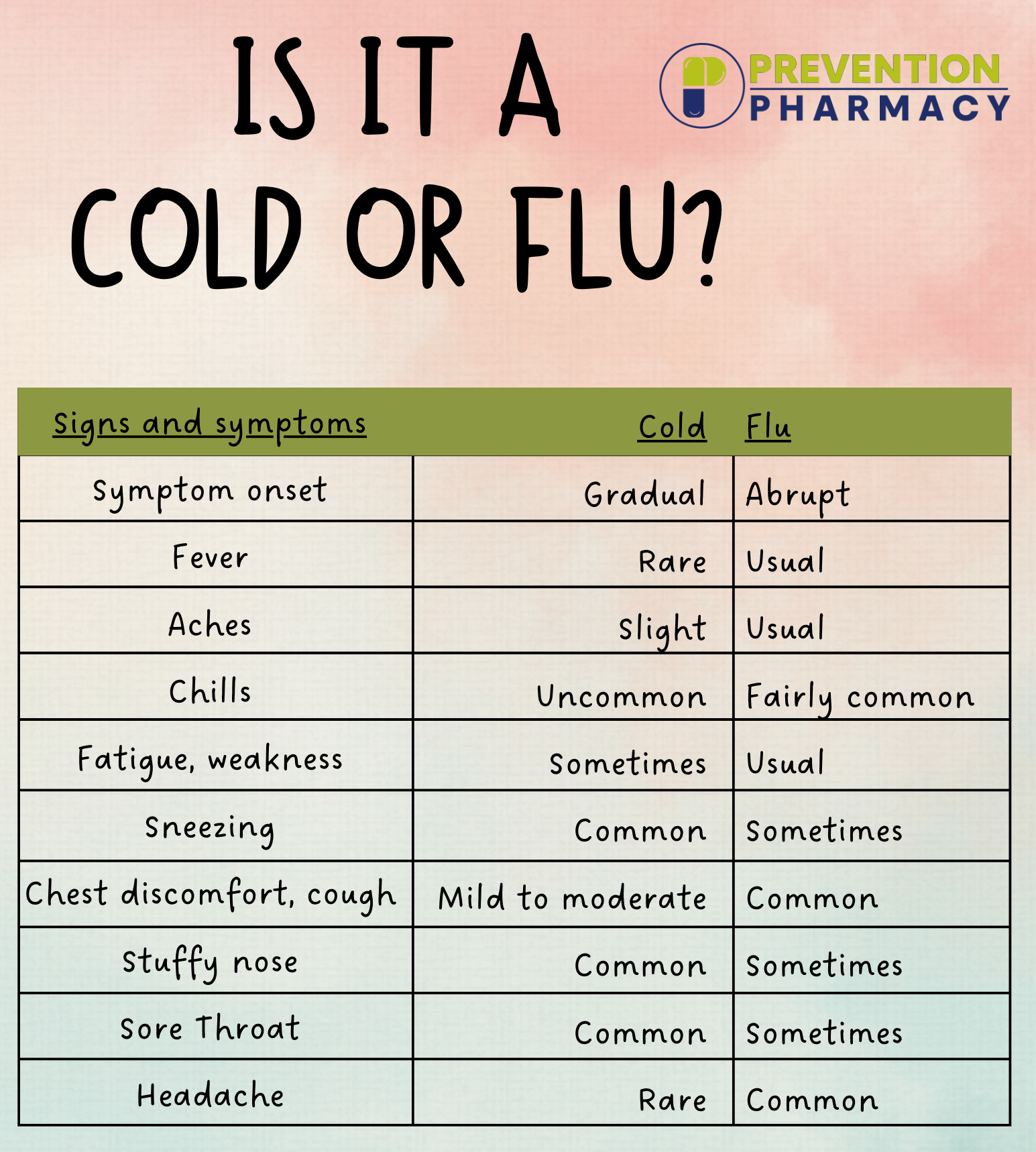
As the seasons change and temperatures fluctuate, it’s common for people to experience symptoms of respiratory illnesses. The common cold and the flu are two of the most prevalent conditions during these times. While they may share similar symptoms, understanding their differences can help properly diagnose and treat.
Both the cold and the flu are highly contagious viral infections that spread through respiratory droplets when an infected person coughs, sneezes, or talks. Additionally, both viruses can survive on surfaces for a short period, making transmission through touch possible.

Prevention and Treatment:
- Practicing good hygiene habits such as frequent handwashing, avoiding close contact with sick individuals, and getting vaccinated against the flu can help prevent both colds and flu.
- While there’s no cure for the common cold or the flu, symptomatic relief can be achieved through rest, hydration, over-the-counter medications (such as pain relievers and decongestants), and antiviral medications (for the flu, if prescribed early).
Understanding the key differences between a cold and the flu can empower individuals to take appropriate measures to prevent illness and seek timely medical attention when needed. By practicing good hygiene, getting vaccinated, and staying informed, we can minimize the impact of these common respiratory infections on our health and well-being. At Prevention Pharmacy, we are committed to helping you prevent and treat your illness. Call us if you need any help at 561-729-0857.
Follow Us on social media

